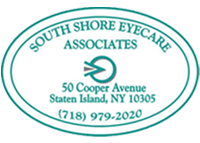Eye Exams for All Ages
Eye exams are an important part of preventive health care. Our team of eye doctors in Staten Island provide a thorough checkup for eyes of all ages, both to ensure everyone in your family is seeing properly and to detect any early signs of eye disease.
We’ll take the time to get to know you and your family. Our treatments are tailored to your unique needs, and we’ll always explain any procedures or tests to ensure your comfort.
Book your appointment and meet our friendly team today!
Book AppointmentHow Often Do I Need an Eye Exam?
The American Optometric Association recommends that low-risk patients adhere to these guidelines at a minimum:
- Adults ages 18 and up should have an eye exam yearly.
Patients with diabetes, high myopia, or other vision conditions should have more frequent examinations. We will work with you and your unique needs to determine the best exam schedule for your eyes.
Book your appointment today to keep on track with your eye health.
Book AppointmentWhat Happens During an Eye Exam?
When you first walk into our practice, you’ll be greeted by our friendly team. If you’re a new patient, we’ll ask some questions about your health history, lifestyle, and current medications. We’ll discuss your family history, give you time to ask questions, and address any concerns.
Comprehensive eye exams are more than just a vision test. Our questions about your health and family history are designed to help us assess your risk factors for eye diseases or other vision conditions.
During the exam, we will carefully and thoroughly evaluate both the internal and external structures of the eye using the latest technology. We will measure your visual acuity to determine whether you need corrective lenses, or if your prescription is up-to-date if you already have them.
We may also assess your color vision, how well the eyes work as a team, depth perception, and the way your pupils respond to light.
Book Your Appointment Today
Even if you think you have perfect vision, it’s still essential to have regular eye exams. Eye diseases can begin with few to no symptoms, so a comprehensive exam remains the best way to assess any early signs of eye disease.
Preserve your sight for years to come by booking a comprehensive eye exam today for every member of your family.
Book AppointmentOur Location

Our Address
- 50 Cooper Ave
- Staten Island, NY 10305
Contact Us
- Phone: 718-979-2020
- Email: [email protected]
Practice Hours
- Monday: 10:00 AM – 5:45 PM
- Tuesday: 10:00 AM – 5:45 PM
- Wednesday: 10:00 AM – 5:45 PM
- Thursday: 10:00 AM – 5:45 PM
- Friday: 10:00 AM – 5:45 PM
- Saturday: 8:00 AM – 2:45 PM
- Sunday: Closed

Our Brands













